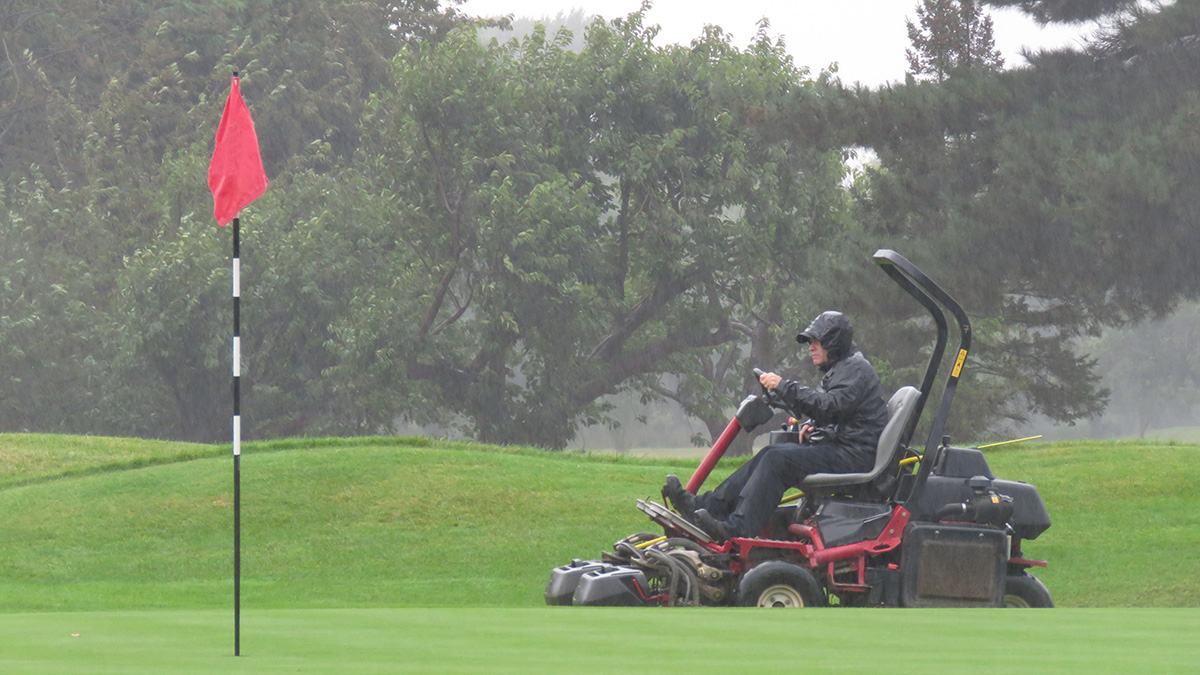- Homepage
- News and Features
- Damage, accidents and injury - why it's unsafe to use machinery in heavy rain
Damage, accidents and injury - why it's unsafe to use machinery in heavy rain
21 February 2024
Feature Article
BIGGA's health and safety partner Citation explains why it is often unsafe to use regular course maintenance equipment when in wet weather and offers advice on how to mitigate the risks.

There are several health and safety implications that arise from using ride-on mowers on waterlogged grass. These include:
- Increased risk of accidents: Waterlogged grass creates a slippery surface, increasing the risk of the ride-on mower skidding or sliding, potentially causing accidents such as overturning or collisions.
- Reduced visibility: Waterlogged grass can obscure hazards underneath, such as tree roots or uneven ground, making it difficult to spot potential dangers while operating the ride-on mower.
- Loss of control: The wet conditions can make it challenging to control the ride-on mower, leading to loss of traction and difficulty maintaining a steady and safe speed.
- Potential for drowning: If the mower overturns or enters a water hazard while operating on waterlogged grass, there is a risk of the operator being trapped or immersed in water, increasing the risk of drowning.
To mitigate these risks, it is important to take the following steps:
- Assess the ground conditions (normally done by the head greenkeeper): Obtain accurate information about the waterlogged areas and assess whether it is safe to use ride-on mowers. If conditions are deemed unsafe, alternative methods for grass maintenance should be considered, for example pedestrian mowers.
- Use appropriate equipment: Ensure the ride-on mower is suitable for the specific terrain and conditions. For example, using mowers with wider tires or ones equipped with extra traction may help improve manoeuvrability and reduce the risk of accidents. Tyre tread should also be checked carefully and regularly and the operators manual can be checked to ascertain whether the tyre pressures can be safely reduced when going over wet ground.
- Provide appropriate training: Operators should be adequately trained to handle ride-on mowers in various conditions, including waterlogged grass. This should include instruction on maintaining control, recognising hazards, and understanding safe operating procedures.
- Implement control measures: Implement additional control measures such as reducing speed, avoiding steep slopes or water hazards and erect barriers or signage to prevent access to particularly hazardous areas.
Tags
Author

Karl Hansell
BIGGA | Former Head of Marketing and Communications
Karl has been head of communications for BIGGA since March 2016. His duties include editing the monthly Greenkeeper International magazine, in addition to other communications activities for the association.
